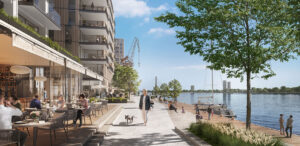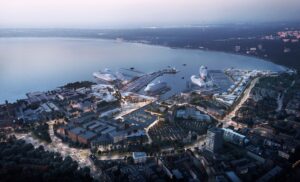Macroeconomic Background
According to the spring economic forecast of the Bank of Estonia, the recovery of the Estonian economy will shift to the second half of the year but will then be more vigorous. According to the central bank, the rapid economic growth in the second half of the year has two sources: the removal of activity restrictions and the temporary sharp increase in consumption based on money withdrawn from the second pension pillar. The recovery of the economy is happening later than forecasted in December, but then more abruptly. The recovery from the crisis at a previously expected pace is hindered by a new and aggressive outbreak and the restrictions imposed as a result. Due to the restrictions, part of the service economy (hotels, restaurants, tourism services, passenger transport, entertainment) will remain in a longer depression and can only start to recover in the second half of the year. Therefore, the economic recovery also shifts to the second half of this year. The normalization of economic conditions coincides in time with the first wave of payouts from the second pension pillar. In the first wave, more money will be withdrawn from the second pillar than previously estimated, because, contrary to expectations, individuals with higher-than-average pension savings are exiting in the first wave. Therefore, the average amount withdrawn from the second pillar in the first wave is significantly higher than previously estimated. The sharply increasing disposable income of households will also be reflected in greater consumption expenses, which will give the economy a temporary strong boost in the second half of the year.
Since the conditions in the first half of the year are still difficult, the economic growth for this year will be 2.7%, but in 2022 economic growth will rise to 5%. The industrial sector and goods exports, which are connected to international commodity markets, are less affected by coronavirus restrictions. International demand for industrial production and global trade has already surpassed pre-crisis levels, which also offers growth opportunities for Estonia’s exporting sectors. As in the previous year, the broader recovery of the economy is largely connected to the removal of domestic demand restrictions. Since the course of the pandemic and the restrictions imposed as a result are difficult to predict, the uncertainty related to the economic outlook remains very high.
Estonia’s gross domestic product grew by 5.4% in the first quarter compared to the same period last year. The large economic growth became possible due to last year’s low comparison base – half of the economic growth came from the impact of taxes, especially the good collection of VAT and excise duties. Of the activities, trade, information and communication, financial and insurance activities contributed the most to economic growth. As with taxes, the positive impact of trade was also due to the decline in the same period last year. The economy was also boosted by the health care sector as a result of coronavirus expenditures and the energy sector, which benefited from a colder winter. Of the larger sectors, the economy was still held back by the manufacturing industry and the construction sector, which was affected by the delayed impact of the coronavirus. Due to activity restrictions, the accommodation and food service sector also remained in decline.
Private consumption has now declined for a full year, falling by 3.3% in the first quarter. Excluding travel-related expenses, the rest of consumption showed modest growth. As in previous periods, expenses related to a home lifestyle increased – communication, home furnishings and supplies. Expenses for eating out, leisure, transportation, clothing and footwear continued to decrease. Health care expenses increased, which also drove the consumption growth of the general government sector. Foreign trade, which started to grow at the end of last year, continued on the same path. Goods exports increased by 5% and imports by 12%. Foreign trade was driven by the import and export of wood products, electronics and motor vehicles. Among services, computer services made the largest positive contribution. Foreign trade in travel services continued to decline, but transport services are gradually recovering.



